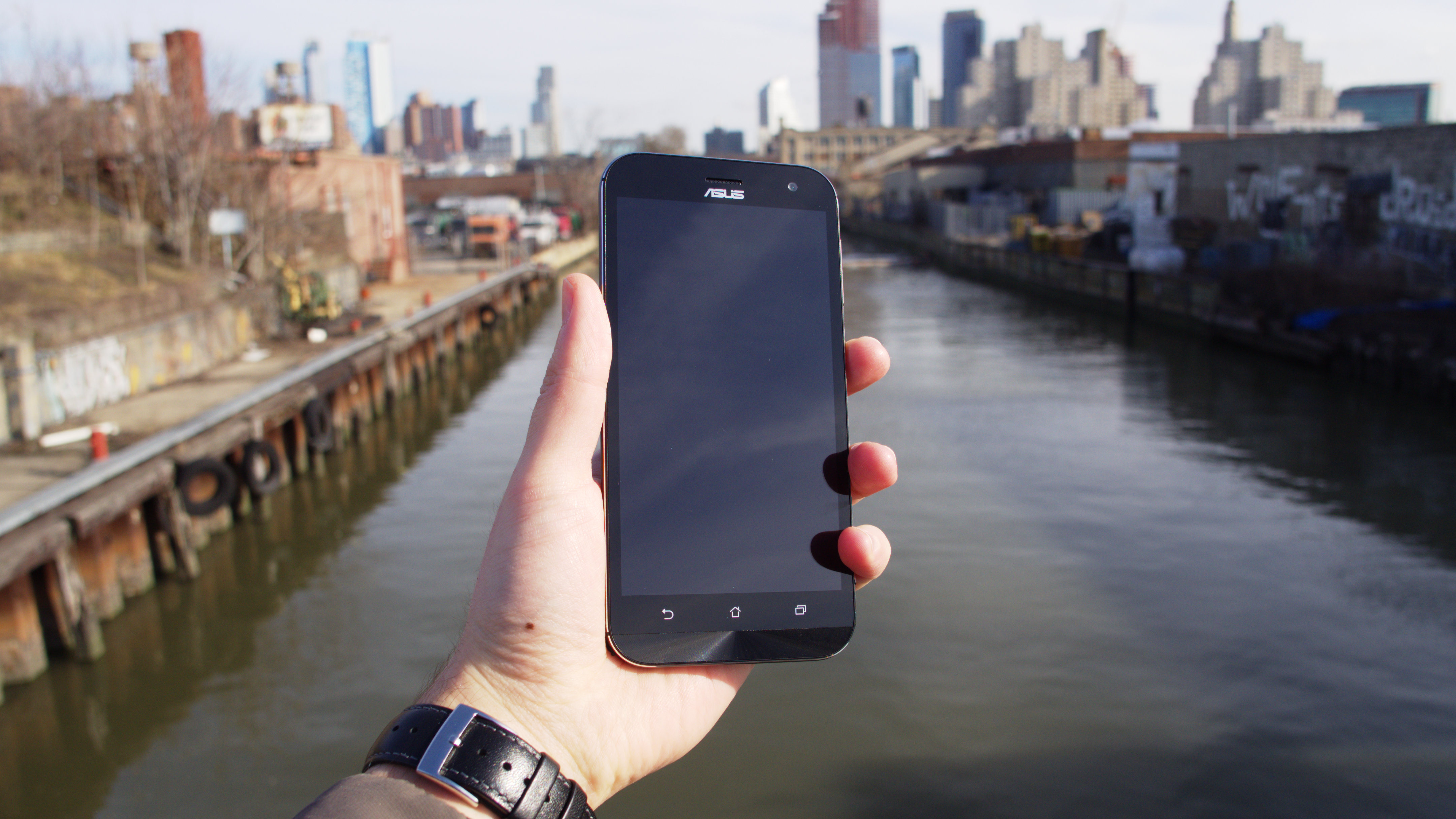Why you can trust TechRadar
This is the moment of truth for the Asus ZenFone Zoom. It has the specs, but do they result in a picture you can't get anywhere else? First, let's dig into what makes the protruding, rear-facing camera stand out from the rest of the crop.
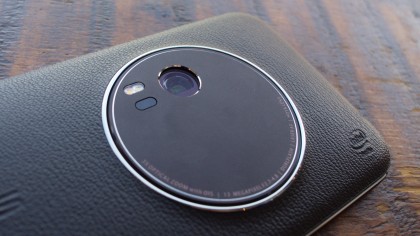
It's a 13MP lens, with 3x optical zoom to allow for noise-free photos. It has an aperture that can adjust between f/2.7 and 4.8 to accommodate for both low-light and normal shooting conditions.
The other important characteristic to note here is that the Zoom packs in optical image stabilization (OIS,) the same tech found in the iPhone 6 Plus and iPhone 6S Plus camera to cut down blurring on the hardware level.
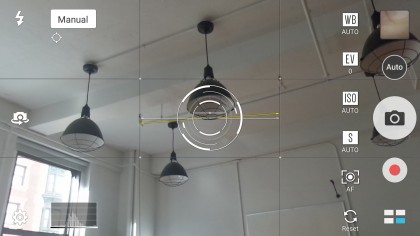
If you're feeling confident, you can (and probably should) shoot in manual mode. While the auto mode makes things easy, I found that the photos produced with this setting were consistently nothing remarkable. Manual mode gives you much more control, which, when in capabble hands, can deliver incredible results.
To highlight the Zoom's strengths and weaknesses, I took similar photos with an iPhone 5S, the phone that now retails for around the same price and one that I've been happily going steady with for the past few years. You can see those comparison shots on the next page.
Shooting video with the Zoom is just as easy as taking photos, thanks to the dedicated button next to the camera shutter. Manual shooting mode translates over to the video capability, allowing you tweak the fine details before you hit record.
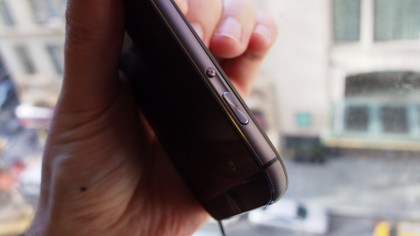
Asus has provided tons of software-added effects to apply to your photos. Some are useful, while others are just for fun. My favorites, aside from manual mode, are the low light and night modes, which lower the aperture value to take better shots in darker environments, as well as the HDR, and "All Smiles" mode, which takes five burst shots, then lets you select the best one. We all have that friend or family member who is impossible to catch smirking.

Switching over to the 5.5MP front-facing camera, it takes shots at a fixed f/2.7 aperture and is capable of capturing 85-degree wide-angled selfies. While that isn't as expansive as the 120-degree spread of the LG V10, the Zoom does try to make up for it with a selfie panorama mode, which is exactly what it sounds like. Like recent Samsung phones, it stitches together selfie photos for an all-encompassing, if incredibly narcissistic, look into your life.

This lens takes passable photos, perfect if you're known to snap a selfie or two (or a million.) Like the main lens around back, Asus provides a few filters to add some versatility and fun to your photo-taking. The best one, without question, is the beautification mode, if only because it's so utterly silly.
Here, the Zoom really benefits from being stocked with current specs that help to power the camera app to be a smooth, quick-performing experience. Pictures and videos record onto the internal storage or microSD quickly, so that you can pop off another masterpiece without waiting.
Scrolling between effects, some of which utilize the gyroscope and facial trait recognition, I never encountered any bit of slow down, though the phone did heat up a bit when under intense pressure.
At the end of the day, the camera isn't revolutionary. I don't think I've seen zoomed-in smartphone pictures look this good, but the flood of manual options only work to highlight how limited the hardware still is. So long as don't expect DSLR-like results from the Zoom, you'll be pleased. Personally, I prefer my iPhone 5S for its small size and rather capable lens, despite its lack of optical zoom.
Battery
Standard functions, like texting, playing games, and making calls can take their toll on a phone's battery. The fact that Asus also encourages you to use the ZenFone Zoom as a standalone camera means that it better be long-lasting.
The Zoom comes with a 3,000mAh battery, which like the ZenFone 2, beats out the capacity found in the iPhone 6 Plus, Samsung Galaxy S6 and HTC One M9. Running a film-length, high-definition video that lasted 90 minutes drained the battery down by 26%, giving you plenty of power left to enjoy.
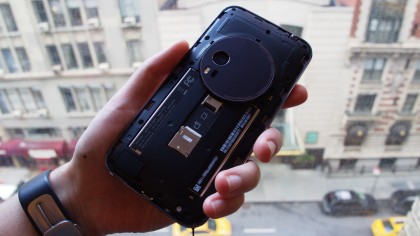
Unfortunately, it isn't swappable. Popping the back off, you can see it peeking around the microSIM and microSD tray, but alas, it's stuck in there. It'd be preferable if I could swap it out, but the blow is softened by the acceptable battery life.
A day with the Zoom generally saw me using the camera several times, listening to Google Music and being tethered to an Android Wear smartwatch over low-energy Bluetooth. In my experience, even during heavier use beyond what's normal for me, like adding in an episode of Seinfeld on Hulu, the battery lasted for well over a day.
It's ingrained into my habits to leave my phone on the charger before bed, so unexpected deaths by a drained battery are rare. But, the Zoom won't punish you for forgetting. One of ZenUI's strengths comes into play with its ability to go into power-saving mode, which really slows down the tick of lost battery life. Also, it can Fast Charge when plugged into a wall adapter, filling up about 50% of the phone in a half-hour.
Current page: Camera and battery life
Prev Page Specs, performance and software Next Page Camera galleryCameron is a writer at The Verge, focused on reviews, deals coverage, and news. He wrote for magazines and websites such as The Verge, TechRadar, Practical Photoshop, Polygon, Eater and Al Bawaba.
